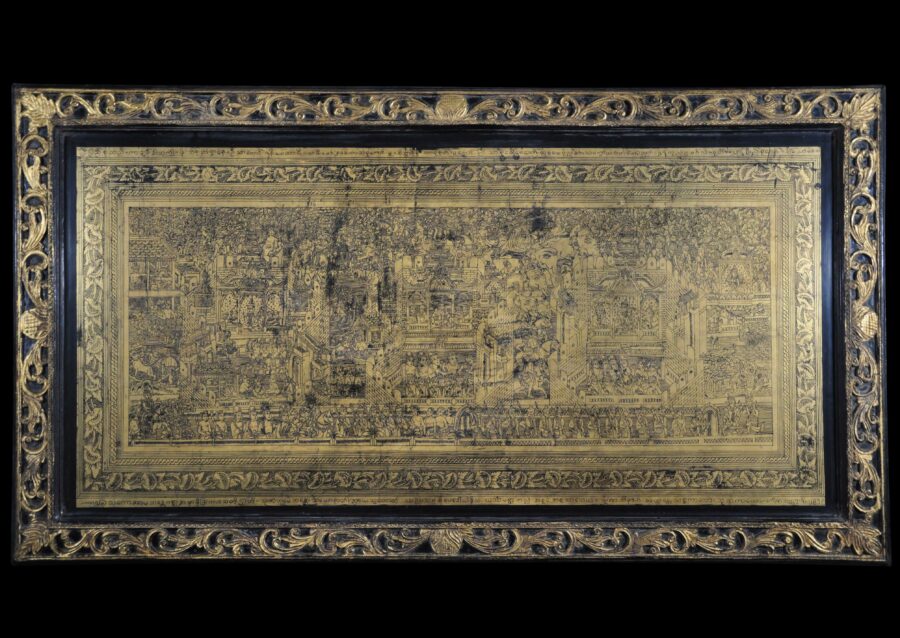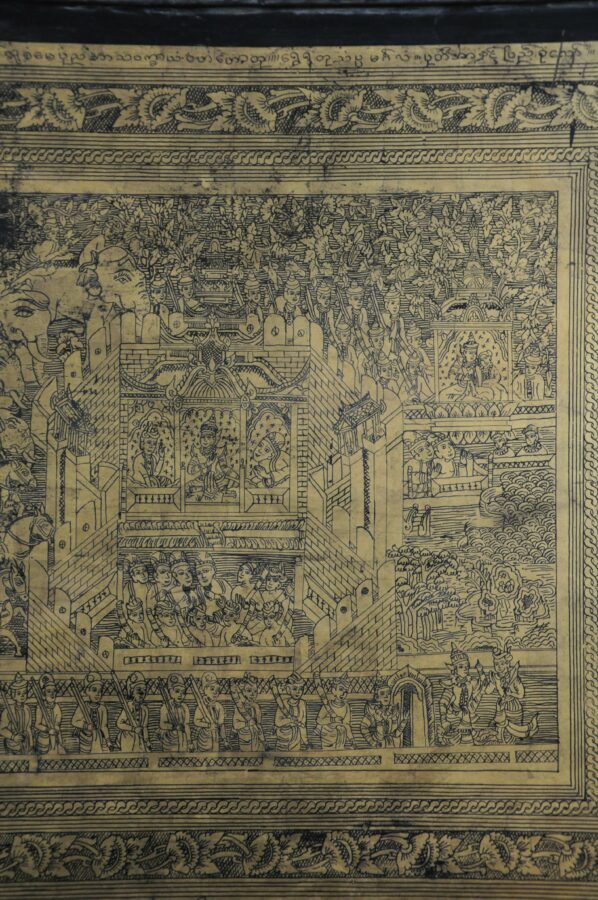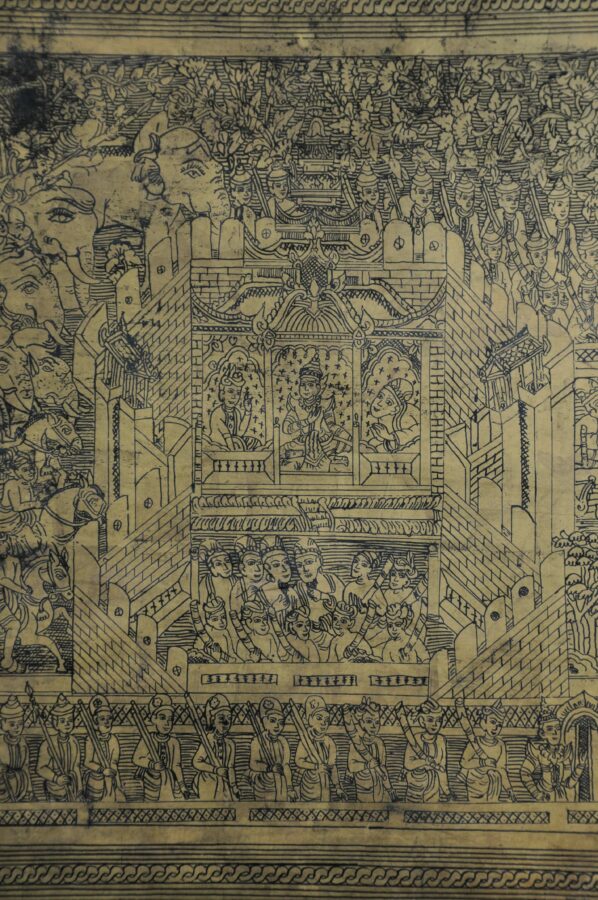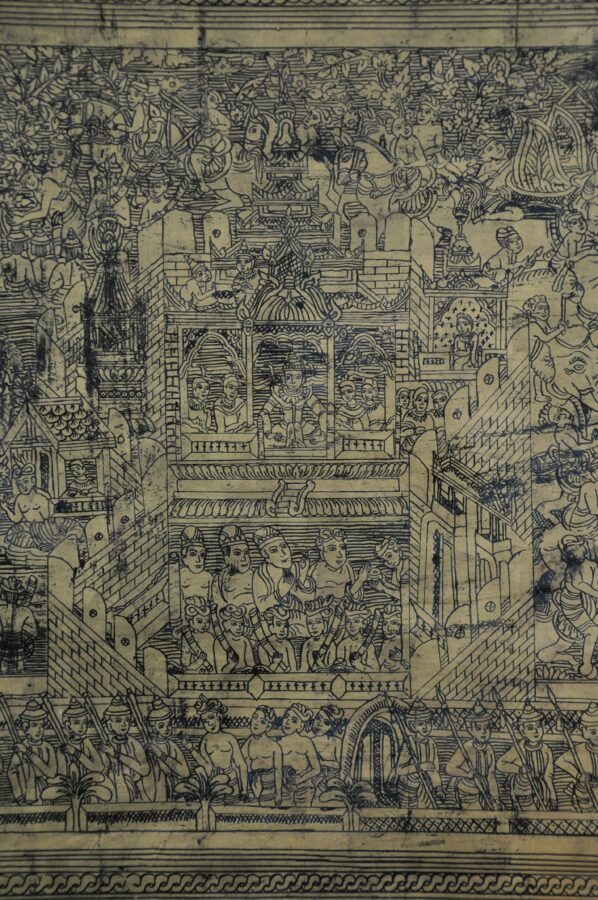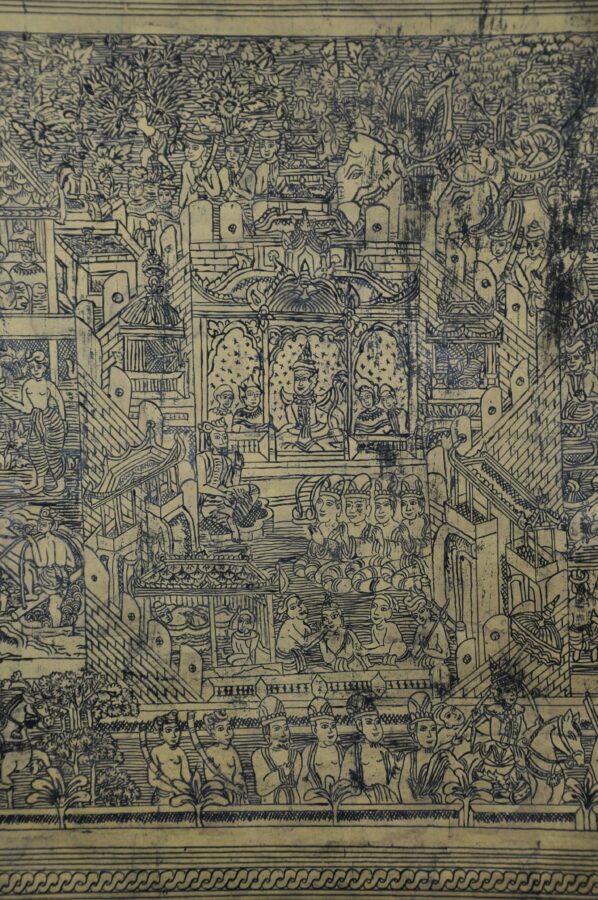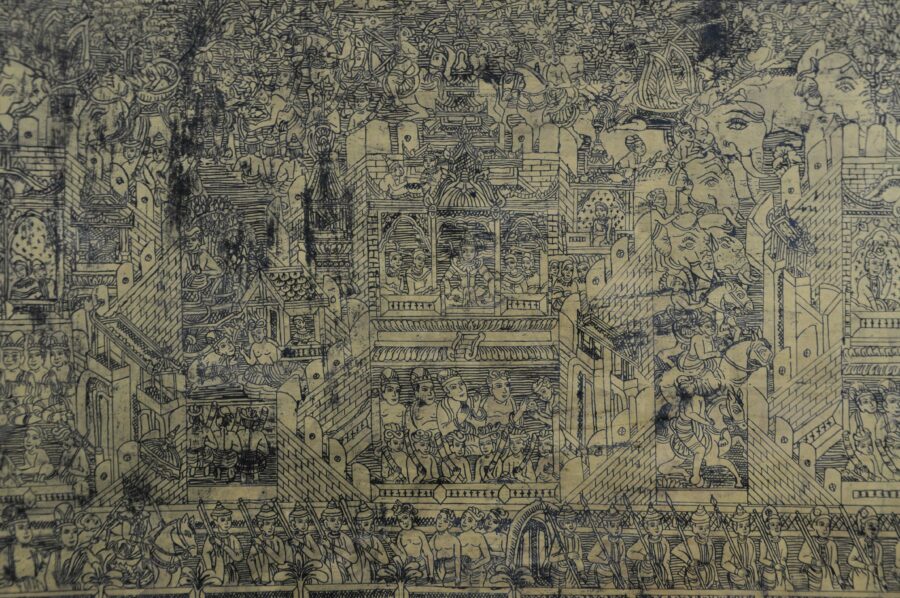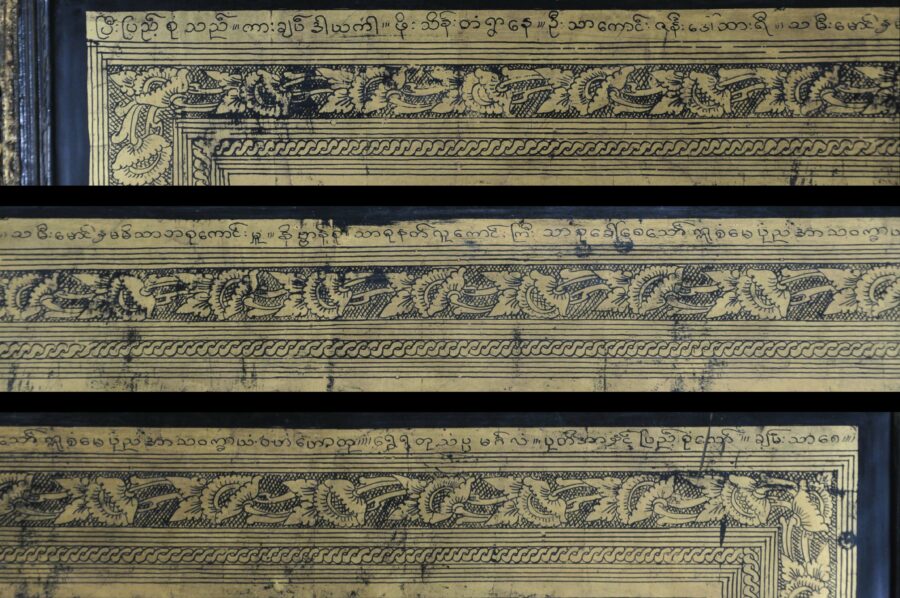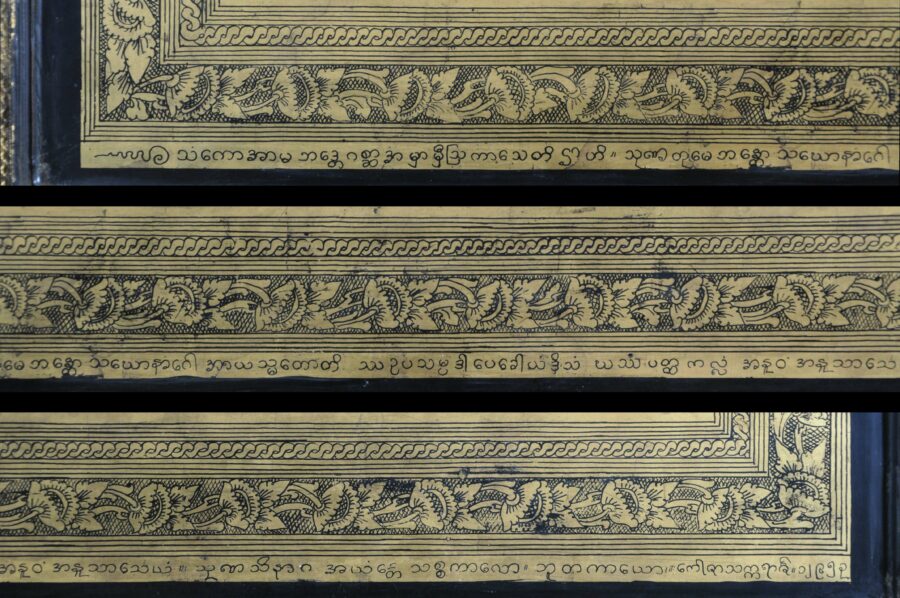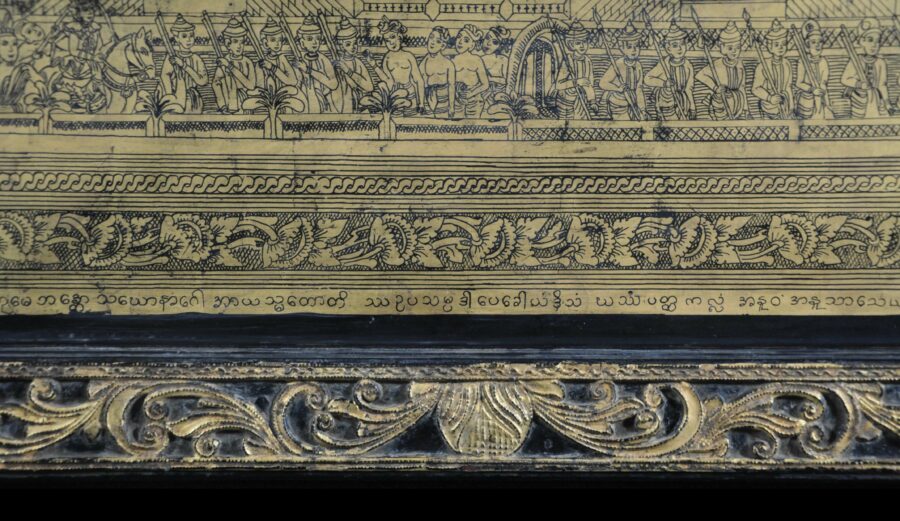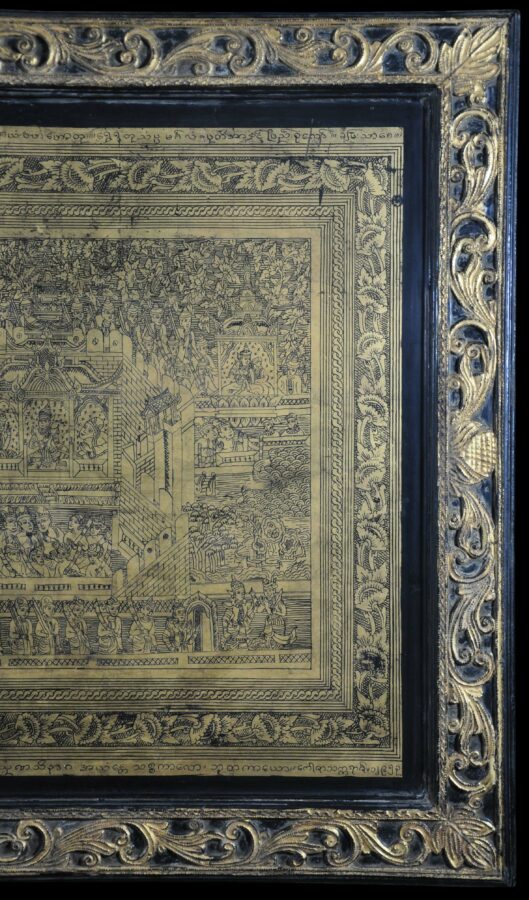Large, Rare, Burmese Shwezawa Lacquered Panel of the Mahosadha Jataka
Probably Pegu, Burma
1930s
width (including frame): 136.3cm, height: 75.6cm
Provenance
UK art market
This large panel comprises etched gold leaf and black lacquer, a technique known as shwezawa work, over a wooden substrate.
Shown are various scenes from the Mahosadha Jataka, which is number 546 in the standard Pali listing of the Jatakas, set within border of open lotus blooms. It is remarkable for the large number of scenes it depicts.
Long lines of Burmese script border the image to the top and bottom.
The wooden panel is mounted in an original wooden frame carved with vegetal and fruit scrolling and decorated in black lacquer with gilt highlights.
Its function is decorative and probably was commissioned by a wealthy donor for presentation to a temple or monastery as an act of merit.
The panel is in fine condition, with only relatively minor rubbing to the Shwezawa work.
A similar example that shows the same scenes is in the British Museum. Indeed, the schema of the Burmese Museum panel is identical to the example here, though the rendering of the Museum example is finer. The two examples are the only examples of which we know of large panels that have these precise scenes in shwezawa. The British Museum example is dated to the late 18th or early 19th century, partly on the basis of its known provenance in that it was acquired from a Scottish family whose forebear acquired it during the Second Anglo-Burmese War of 1852 (Isaacs & Blurton, 2000, p. 157).
What does the panel depict? The following description follows that of (Isaacs & Blurton, 2000, p. 157-158).
The panel shows three three palace buildings – that of king Vedeha at Mithila on the left; that of king Culani at Uttarapancala in the centre; and the magical palace of Mahosadha on the right.
Mahosadha is tested by the king who tells him to find a jewel, which is seen in a lake (shown as a square tank at top left). The jewel however is actually hidden in an over-hanging palm-tree. The Bodhisattva realises this and the jewel is recovered (the Bodhisattva is shown climbing in the palm-tree above the water). The Bodhisattva encounters the four sages at the court of King Vedeha of Mithila where riddles are asked by the king (the palace on the left of the panel). Next, he meets Amara, later his wife (on the far left of the panel where they are shown asking each other riddles). The evil sage Kevatta brings the armies of India against Mithila, but is defeated through the cunning of the Bodhisattva (the armies with elephants are shown at top centre).
The wicked ‘brahmin’ Kevatta sets out to lure Vedeha to the city, Uttarapancala, of his king, Culani. He does this by inflaming Vedeha’s desire for the daughter of Culani, Pancalacandi (the palace is seen at the centre, Culani is shown in council, and Pancalacandi appears in the small pavilion above and to the right of her father). Mahosadha erects a magical palace filled with magnificent rooms (the palace on the right side of panel) and linked by a tunnel to the Ganges via the palace of Culani (the exit from the tunnel is shown as an arched doorway at the bottom of panel beneath the palace of Culani).
Vedeha enters the magical palace on his arrival from Mithila and is threatened by the army of Culani (horses and elephants are shown massing on the left side of the palace of Mahosadha). King Vedeha is terrified and realises that he is trapped. At first he requests the aid of the four sages but they only suggest suicide (these are the four figures in the lower section of Mahosadha palace). The king then consults Mahosadha who tells him of the existence of the tunnel, down which he escapes to the Ganges.
Meanwhile the troops of Mahosadha capture the princess who is also smuggled through the tunnel. She then meets Vedeha and they are married (this is shown in the scene at top right above the expanse of water). They leave for Mithila by elephant and by boat (the water on the far right-hand side beneath the ‘marriage scene’). They are then enthroned in the palace at Mithila (shown as the couple in the pavilion at far top right-hand corner).
References
Fraser-Lu, S., Burmese Lacquerware, White Orchid Books, 2000.
Isaacs, R., & T.R. Blurton, Burma and the Art of Lacquer, River Books, 2000.
Than Htun (Dedaye), Lacquerware Journeys: The Untold Story of Burmese Lacquer, River Books, 2013.


